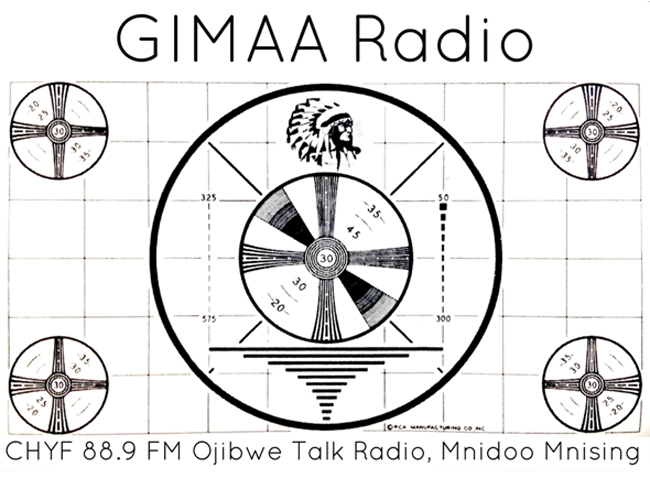Gimaa Radio looking for contributions though its Kickstarter Campaign
 By Rick Garrick
By Rick Garrick
M’CHIGEENG – The Ojibway Cultural Foundation (OCF) is looking to raise funds for Gimaa Radio 88.9 CHYF FM’s broadcast and online services through a Kickstarter Campaign.
“Our goal is to generate $8,000 in 20 days,” says Peggy Simon, OCF’s acting executive director, noting the campaign began on Nov. 30. “The Kickstarter will help offset some of the costs for the Gimaa Radio to have a staff person. Currently the Gimaa Radio is all run by volunteers.”
Gimaa Radio was first developed by Carl Beam, a residential school survivor and artist who recognized how important language was and what its retention meant for a person’s identity, culture, confidence and self-expression. Beam, his wife Ann and two friends developed the idea of the Anishinabemowin radio station to help listeners improve their fluency in Anishinabemowin and to serve as a language and cultural recovery tool.
“He started it with Radio Free Berkley, a group down in California (that) provides radio broadcasting systems for Indigenous people mainly down in South America,” says Anong Beam, Carl Beam’s daughter. “It kind of got off the ground but it wasn’t really feasible and the licensing aspect wasn’t there.”
After her father passed away in 2005, Anong and her husband Mark Larochelle began working to obtain a radio licence through the Canadian Radio-television and Telecommunications Commission (CRTC).
“In 2007 we bought the proper equipment, a transmitter, an antenna and an amplifier and we started the CRTC paperwork,” Anong says. “About five years later we got approved for the licence. So we had the CRTC licence, we had the equipment but we didn’t quite have the proper technology, the computers to run it. We were running it on just an iPad loop that played a playlist of Anishinabe programming.”
Anong and Larochelle donated Gimaa Radio to the United Chiefs and Councils of Mnidoo Mnising this past June after realizing they needed to form partnerships to make it more serviceable for the community.
“They are in charge of the major decisions now, and what they have identified is that we really need one full-time person,” Anong says, noting the staff person could record Anishinabemowin events, reset the transmitters after power flickers and other duties. “The idea is to turn (Gimaa Radio) into a tool that can contemporize the language so it is not just about preserving the history or preserving the past, although they would still do that, but to bring it into modern times.”
Gimaa Radio was relaunched at the Three Fires Gathering last August as a local radio station in M’Chigeeng and an online radio station available at: www.gimaaradio.com.
“It’s just in this continuous loop right now,” Simon says. “But we want to have different Elders come in, we want to have weather reports and use it as a communication tool for the local area.”
Simon says another goal is to set up transmitting towers in communities across Manitoulin Island, noting there is currently only one transmitting tower.
“We’re hoping to do 80 per cent in the language,” Simon says. “And one of our further goals would be to have the youth in year one or two to host their own segment.”
The Kickstarter Campaign link can be found at the Gimaa Radio Facebook page at http://www.facebook.com/gimaafm/ and at the UCCMM Events Calendar at http://www.uccmm.ca/gimaa-radio.html
“Because Christmas is coming up, we hope people will support this important initiative,” Simon says. “Help support local native languages by making a pledge.”


